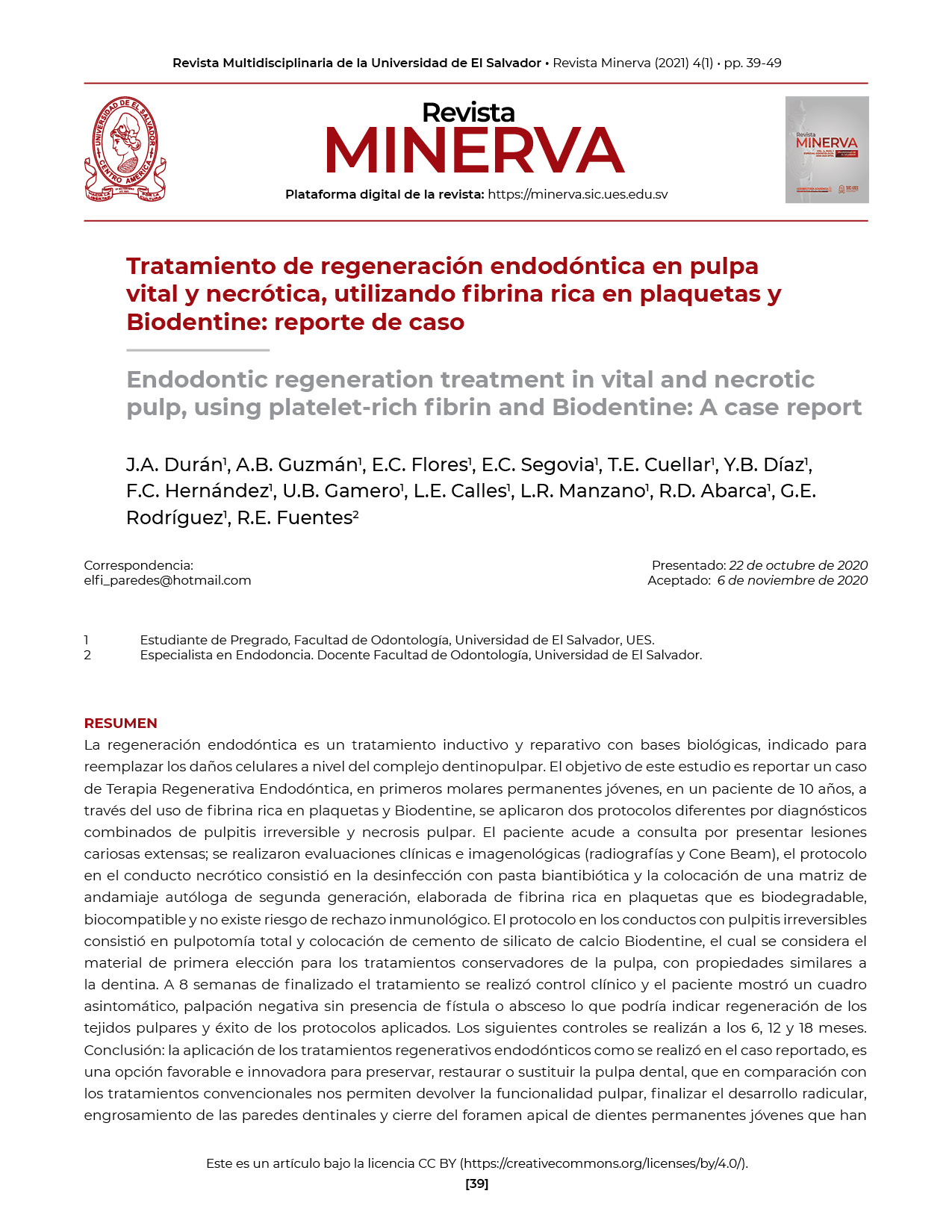Abstract
Endodontic regeneration is an inductive and reparative treatment with biological bases, indicated to replace cell damage at the level of the dentinopulp complex. The objective of this study is to report a case of Endodontic Regenerative Therapy, in young permanent first molars, in a 10-year-old patient, using platelet-rich fibrin and Biodentine, applying two different protocols for combined diagnoses of irreversible pulpitis and pulp necrosis. Patient attends consultation due to extensive carious lesions; were performed clinical and imaging evaluations (X-rays and Cone Beam), the protocol in the necrotic canal consisted of disinfection with bi-antibiotic paste and the placement of a second-generation autologous scaffold matrix, made of platelet-rich fibrin that is biodegradable, biocompatible and there is no risk of immune rejection. The protocol in the canals with irreversible pulpitis consisted in a complete pulpotomy and placement of Biodentine calcium silicate cement, which is considered the first choice material for pulp-conserving treatments, with properties similar to dentin. 8 weeks after the end of the treatment, a clinical control was carried out showing an asymptomatic chart, negative palpation without the presence of fistula or abscess, which could indicate regeneration of the pulp tissues and success of the protocols applied, controls will be carried out at 6, 12 and 18 months. Conclusion: The application of endodontic regenerative treatments as performed in the reported case, is a favorable and innovative option to preserve, restore or replace the dental pulp, which in comparison with conventional treatments allow us to return pulp functionality, complete development root, thickening of the dentinal walls and closure of the apical foramen of young permanent teeth that have been affected by pulp pathologies. It is important that regenerative therapies are disclosed and applied by professionals.

This work is licensed under a Creative Commons Attribution 4.0 International License.
Copyright (c) 2021 Authors who publish in Revista Minerva agree to the following terms: Authors continue as owners of their work, assigning only dissemination rights to Minerva Magazine under the standards of the Creative Commons Attribution 4.0 International License (CC BY 4.0). This license allows others to mix, adapt and build upon the work for any purpose, including commercially, and although new works must also acknowledge the initial author, they do not have to license derivative works under the same terms.




